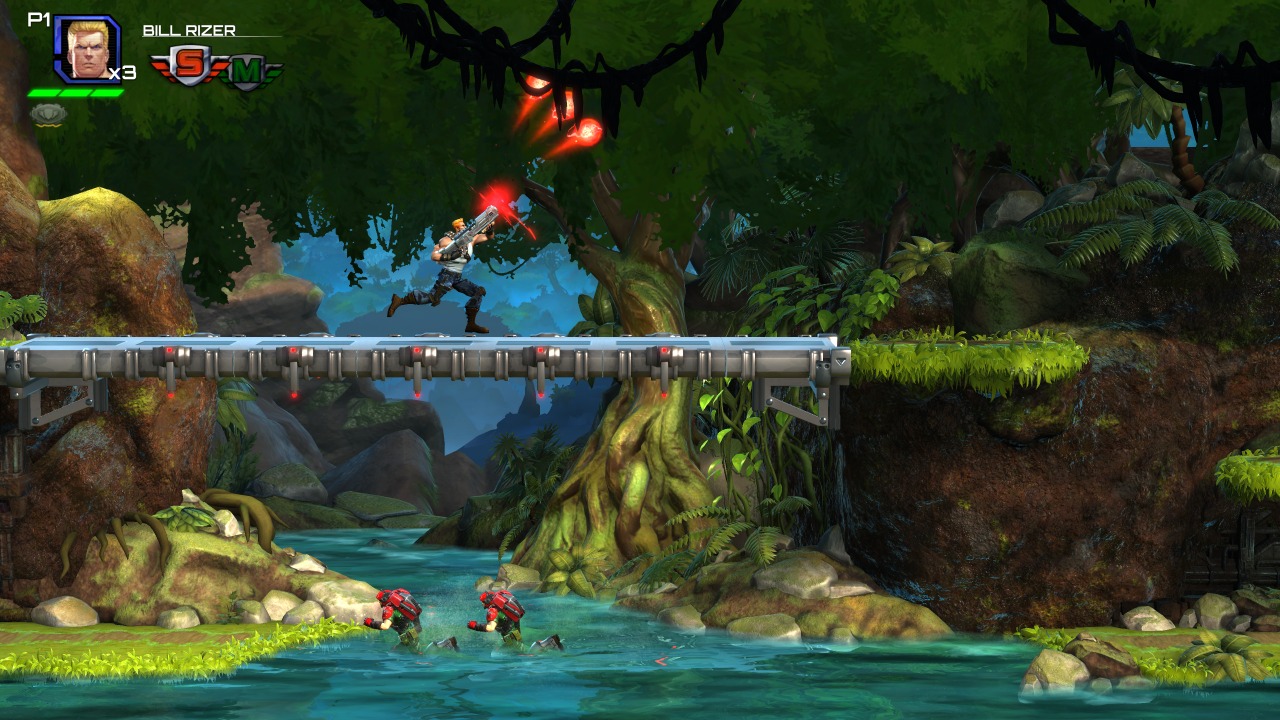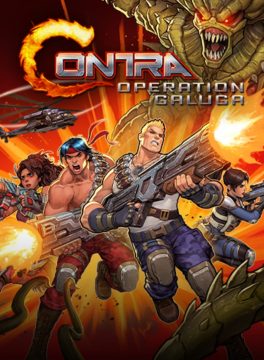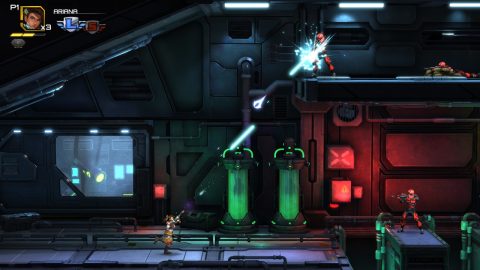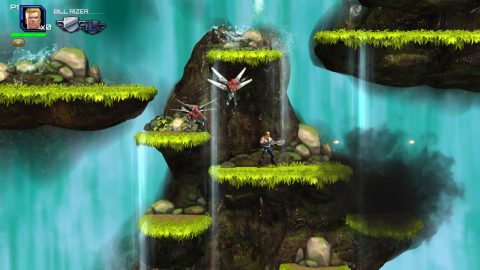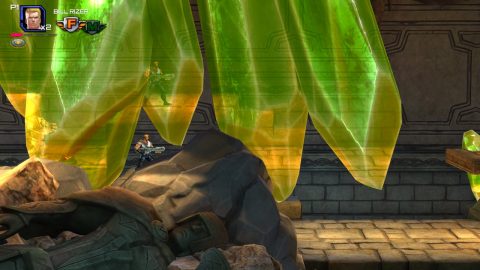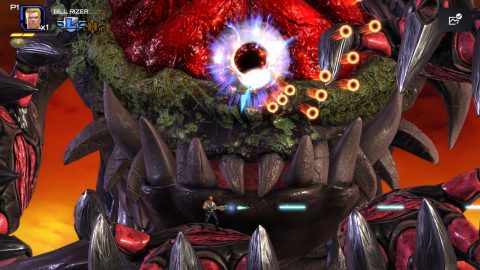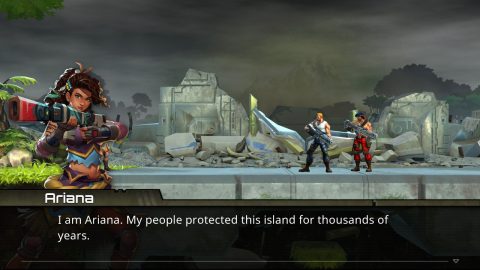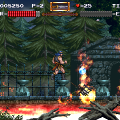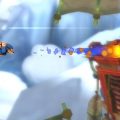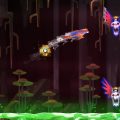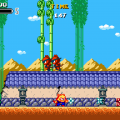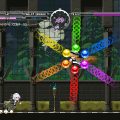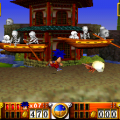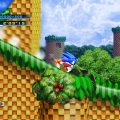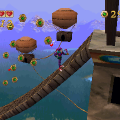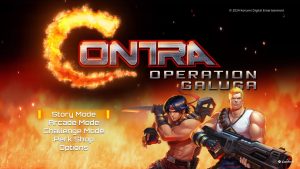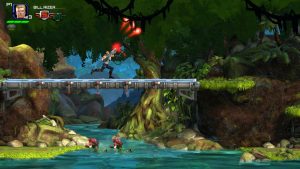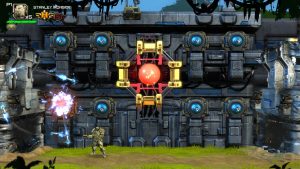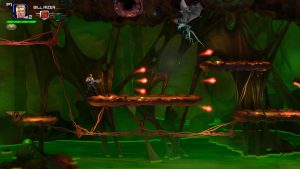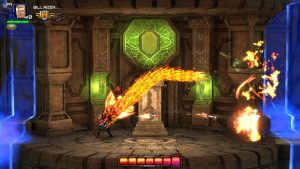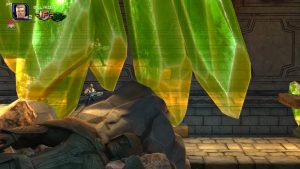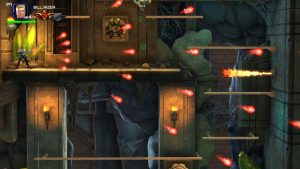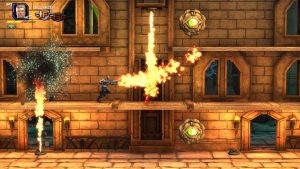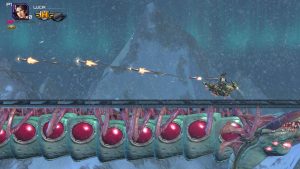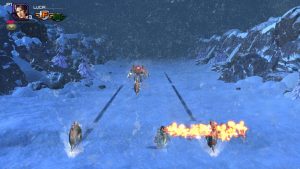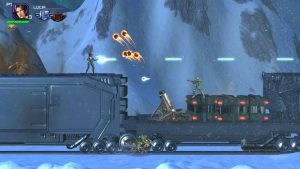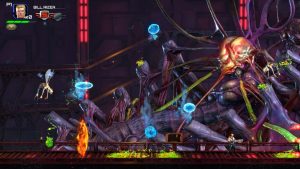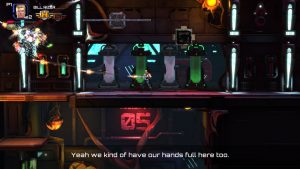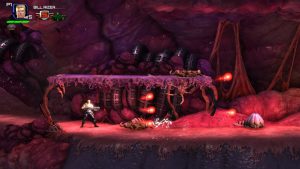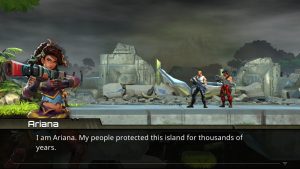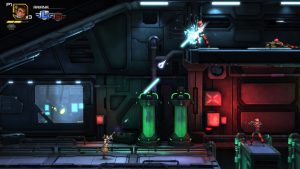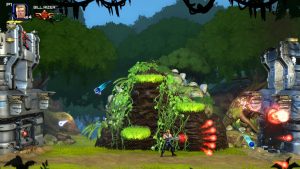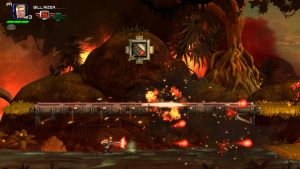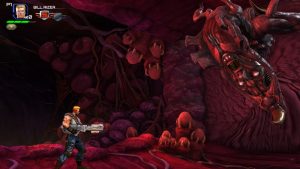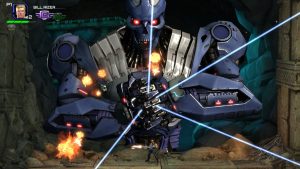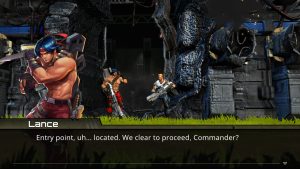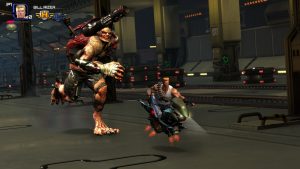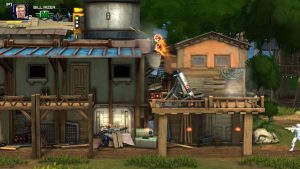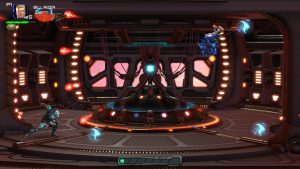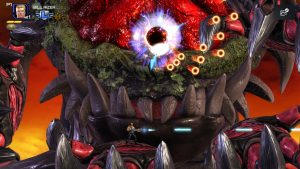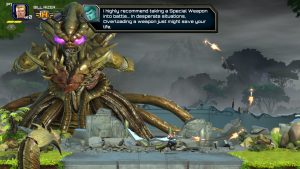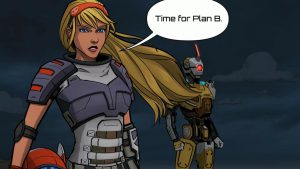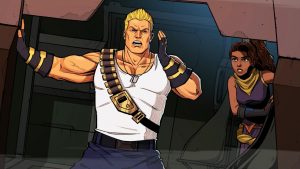- Contra: Operation Galuga
- Contra Returns
Read more about the Contra series in our book Contra and Other Konami Classics!
Konami has kept the Contra series vaguely alive over the past decade, with the smartphone run-and-gun Contra Returns and the ill-advised twin stick shooter Contra: Rogue Corps. But 2024 saw a more proper revival with Contra: Operation Galuga, the first mainline game in the series since 2011’s Hard Corps: Uprising. It was developed by Wayforward, also behind 2007’s Contra 4 for the DS, which gives it some consistency in the way the series hasn’t seen for a long time.
Operation Galuga is a sort-of remake of the events from the original Contra, detailing Red Falcon’s initial invasion of Earth on a small South American island. This game originally didn’t have much of a story beyond what was in the manual and in some cutscenes in the Japanese-only Famicom version, with the rest retconned in by subsequent games. But this entry seeks to combine elements of a few other Contra games into a single origin point.
This game utilizes 2.5D visuals while sticking to traditional side-scrolling action. The visuals are a midpoint between the dark and gritty Contra: Shattered Soldier and the anime-style Hard Corps Uprising. It doesn’t have a stronger defined aesthetic, beyond the characters looking like action figures coming to life. Some parts of it look dull, but others are made lively by some nice colored lighting. The Switch suffers from substantial performance issues and long load times, while the PlayStation 4 version runs better but is capped at 30 FPS, which feels bad for a Contra game. The performance isn’t the greatest despite not doing anything fancy. The PlayStation 5, Xbox One Series and Windows versions are definitely the way to go. The music by Norihiko Hibino (Metal Gear Solid 2) and Yuko Komiyama (Monster Hunter) consists mostly of orchestral style arrangements of classic Contra themes, but they sound more appropriate to a movie than a game, with the melodies often hidden behind long, meandering segments.
Aesthetically Operation Galuga may leave a bad first impression, but it’s definitely a Contra game through and through, developed by folks who have obvious skill and love for the series. While the game may technically be based on the first Contra, it isn’t concerned with being too faithful, and instead remixes famous themes rather than adapting them literally. The first stage takes place in a jungle, with a midsection set on fire due to a sudden helicopter crash. The over-the-shoulder stages are gone, here replaced with two vehicle segments, similar to the 16-bit console games, though here they both drag on for a little too long. There’s a waterfall stage, of course, but it opens with a trek through a local village, and ends with a hugely reimagined version of the towering alien boss Gromaides. The spiked crushers of the Hangar zone end up adapted in a new laboratory stage, while the flamethrowers from the Energy zone appear in a similarly new ruins level. All of this ensures that the game is both fresh and familiar. Probably the most unique callback isn’t to a Contra game, but rather Castlevania: Bloodlines for the Genesis.
One of the final stages of that game consisted of a segment where the screen was “cracked” like a mirror, requiring that you piece together parts of the level in the broken pieces to determine when and where to jump. But there was no logic or rationale behind it, it was just an interesting effect created by the programmers. In Operation Galuga, it uses the green crystals in the ruins level to refract the playing field in similar ways, sometimes even changing the view’s orientation. It’s an interesting technique that Konami fans are sure to love, along with the reappearances of the famous flame dragon from various Konami shooters, as well as the one-eyed brain on an enemy monster recalling Life Force.
Gameplay-wise, it’s based on Contra III, allowing you to swap between two collected weapons while giving your default weapon some basic rapid fire, but there’s no screen clearing bombs. You can lock your aim, but can’t strafe as you could in Shattered Soldier. Up to four players can also play at once, though only with local play. By default your characters also have a life meter, allowing you to take a few hits before dying. This is particularly useful since it lets you keep your equipped weapon as long you still have some health left.
New to Operation Galuga is the 360 degree aim using the analog stick, which lets you more precisely shoot at enemies. The downside is that analog sticks feel spongy for 2D character movement, and you can still use traditional eight-way controls with the D-pad. But the enemy placements suggest that the game was designed with 360 aim in mind, so it’s highly recommended to make this compromise.
Playing through the game will earn points that are used in a Perk shop to buy assorted upgrades like increasing your health or life meters, enhancing character abilities, letting you start a weapon with a specific stage, and other enhancements. There’s nothing that will break the game or make it too easy, but it’s a nice way to customize and improve your characters.
There’s also quite a few playable characters, The game starts off with Bill and Lance, with the Probotector robots available in other modes, who play as much as they did in the older games, along with new double jump and dash abilities. As you play through the Story Mode, you’ll also unlock a few others, including the local guerilla Ariana, the commando Lucia (as a human rather than a cyborg as in Shattered Soldier), and the robot suit-wearing Stanley Ironside. Not only do each of these come with their own default health and special moves, but some of their weapon sets change, too. Ariana has lower health but can slide, and has a variant version of the Crush gun which fires grenades. Meanwhile, Lucia has a grappling hook similar to the one found in Contra 4, and Stanley can hover for a brief period of time.
The Story Mode also regularly stops for characters, friends and foe, to exchange words with each other. The lore of Contra isn’t particularly interesting despite the writers’ best efforts, and the attempts at macho 80s action movie-style dialogue never really works either, though. One joke character is an experiment who keeps getting shot by snipers but miraculously survives by the end. He’s revealed as Brad Fang, the werewolf guy from Contra: Hard Corps, and he’s also joined by fellow soldiers Sheena and Browny (though here a human sized robot rather than a tiny one).
However, the Hard Corps characters need to be unlocked in the Perk shop and they require an absolutely absurd amount of points to unlock. Similarly, you can purchase alternate soundtracks, ranging from tunes to old Contra and Castlevania games to new Contra remixes, but they’re also ridiculously expensive. It makes these bonuses feel like a free-to-play game even though there’s no microtransactions or any way to get more points beyond repeatedly grinding through the game’s various modes.
There’s a lot of mixed feelings to be had with Operation Galuga – the graphics surely could’ve used a stronger identity and the music could’ve been less bland. And since it’s a remake, it’s hard to shake the feeling that an original story and setting would’ve been impactful. But the level designs are solid (overly long vehicle levels notwithstanding), the 360 aim feels great, it’s challenging without being frustrating, and both the multiple characters and the perk system encourages players to find their own style. Operation Galuga stumbles a bit, as with many Contra sequels, but it’s also easily the best treatment the series has seen since Hard Corps: Uprising more than a decade before it. Still, longtime Contra fans may find better satisfaction with Contra-inspired retro titles like Blazing Chrome and Iron Meat. Perhaps Konami should take note.
